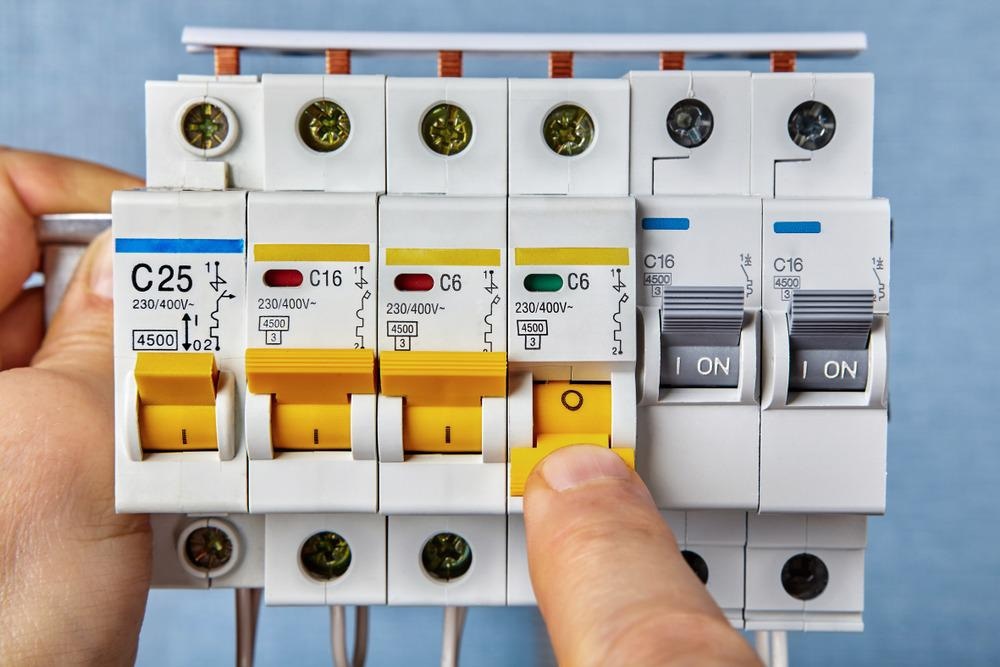Circuit breakers are critical safety components that have the basic function of interrupting a current flow when a fault is detected. Designed to protect against excess current or an overload or short circuit, their role is significant within technology. However, grease used in traditional circuit breakers decomposes over time, resulting in a recurring maintenance requirement.

Image Credit: Grigvovan/Shutterstock.com
The Circuitbreakers Spearhead Project aims to develop grease-free circuit breakers by utilizing graphene, which has self-lubricating properties. A graphene solution could tackle this ubiquitous problem all businesses face and reduce the overall expense that has to be factored in with maintenance-free circuit breakers. This article will explore the workings of this revolutionary graphene solution led by the Circuitbreakers Spearhead Project.
The Graphene Flagship company and its European industrial partners, including ABB Corporate Research, Nanesa, and Graphmatech AB, have spearheaded novel research into developing graphene technology to disrupt the traditional circuit breaker industry. These companies have united their strengths to develop and optimize a potentially effective innovation in place of a conventional safety component.
ABB Corporate Research, based in Sweden, aided this research by defining specifications for material requirements. At the same time, another European partner, Chalmers University of Technology, undertook benchmarking of various graphene materials to create raw materials. Nanesa, based in Italy, was involved in evaluating multiple electroplating process conditions and investigating graphene morphology for the purpose of metal-graphene coatings required for the novel circuit breakers.
When examining the significance of various treatment processes, The University of Rome Tor Vergata took the lead, while Graphmatech AB was involved in preparing metal-graphene composites using specific metal powders and utilizing their ArosGraphene® material. Industry leaders were very involved with the Circuitbreakers project, aiming to develop smart and sustainable solutions to innovate the circuit breakers market.
Limitations of Traditional Circuit Breakers
Traditional circuit breakers, which are known as low voltage circuit breakers (LVCB), are used mainly for domestic and industrial applications. The dependency of LVCB on their grease-lubricated steel-steel mechanical joints is a major limitation of these safety components. Reliance on grease also results in other issues, including stiffening with age, having a narrow temperature window as well as moving away from the contact spot while in operation.
The lubrication, which is applied during the point of manufacturing, dries out over time and is a significant and widespread problem found by service technicians who then re-lubricate the components. The lack of grease located between services leaves more contact between metal-to-metal, which can cause wear.
Anna Andersson, leader of the Circuitbreakers Spearhead Project as well as Principle Scientist at ABB Corporate Research has explains:
These next generation circuit breakers will enable a robust electrical system that secures the continuous operation of critical facilities, such as renewable-energy generation sources, hospitals and data centres.
Anna Andersson, Principle Scientist, ABB Corporate Research
Andersson continues, emphasizing the importance of having year-round effective circuit breakers which will not succumb to power outages, stating that, “although circuit breakers are designed and thoroughly validated for the application, the risk of any undesired outage of an electrical system due to circuit breaker failure cannot be taken lightly.”
Benefits of The Novel Innovation
The use of dependable technology such as maintenance-free circuit breakers would decrease the maintenance of these integral safety components, decreasing the probability of undesirable outages. This graphene solution may revolutionize the electrical industry both nationwide and globally, as it would provide a reliable and responsible safety component that would solve many security issues.
This Graphene Flagship project aims to use multifunctional metal-GRM composite coating, created using a cost-competitive electroplating process. The novelty in these graphene composites is their self-lubrication properties, which will birth a new generation of robust maintenance-free circuit breakers.
The research team has found success in utilizing copper within GRM coatings with the appropriate friction properties required; this would enable it to be a competitive alternative to the greased contacts found in traditional circuit breakers. Additionally, the novel coatings had proven to show less wear and good adhesion, as well as a higher level of resistance to oxidation compared to pure copper.
The Circuitbreakers Spearhead Project estimates that this novel technology will be ready for industrial use and application after approximately three years. By then, a fully functional prototype will have been trialed and tested.
Graphene is considered the ‘dream material’ for many material scientists due to its versatile properties. By reinforcing copper with graphene, the mechanical and functional properties of copper are increased, so less material is required for the same purpose, such as for electrification.
3D printing of these materials is complex due to high reflectivity. However, through the expertise of the industrial partners involved, such as Graphmatech, these obstacles were overcome to produce a novel coating technology.
As a market leader, the mission of the Graphene Flagship is to bring successful and innovative technology into the market, disrupting current conventional technology, which may require advancements. As it is in the process of obtaining ISO certifications and being meticulous about quality control, especially in graphene standards, the Graphene Flagship is part of the Swedish Institute for Standards (SIS) Nanotechnology Committee. This partnership enables them to influence future standards globally, growing as a graphene solutions market leader.
Further Reading and References
Graphene-flagship.eu. (2021) Circuitbreakers based on graphene could safeguard the electrical grid | Graphene Flagship. [online] Available at: https://graphene-flagship.eu/graphene/news/circuitbreakers-based-on-graphene-could-safeguard-the-electrical-grid/ [Accessed 30 August 2021].
Graphene-flagship.eu. (2021) Graphene Flagship Circuit breakers go maintenance-free | Graphene Flagship. [online] Available at: https://graphene-flagship.eu/innovation/spearheads/c3-sh03-circuitbreakers/ [Accessed 30 August 2021].
Graphene-flagship.eu. (2021) Metals and graphene: a new direction for innovation | Graphene Flagship. [online] Available at: https://graphene-flagship.eu/graphene/news/metals-and-graphene-a-new-direction-for-innovation/ [Accessed 30 August 2021].
Passive Components Blog. (2021) Graphene Enables Maintenance-Free Circuit Breakers. [online] Available at: https://passive-components.eu/graphene-enables-maintenance-free-circuit-breakers/ [Accessed 30 August 2021].
Disclaimer: The views expressed here are those of the author expressed in their private capacity and do not necessarily represent the views of AZoM.com Limited T/A AZoNetwork the owner and operator of this website. This disclaimer forms part of the Terms and conditions of use of this website.